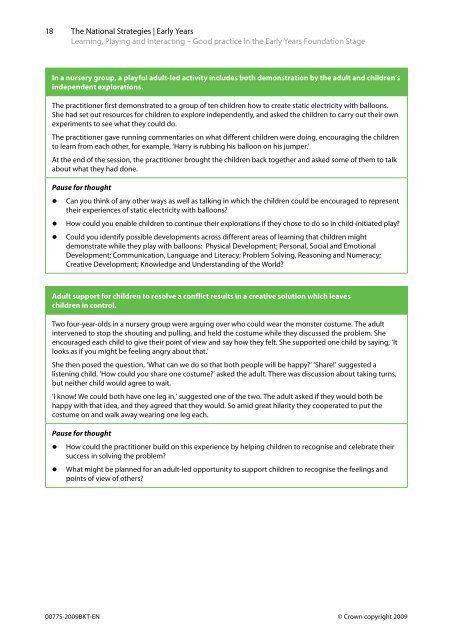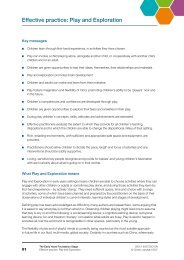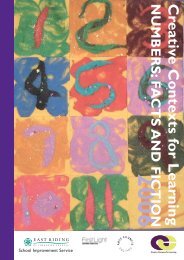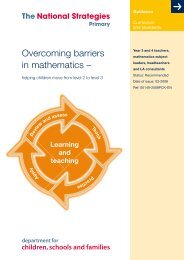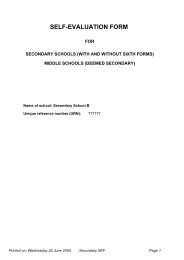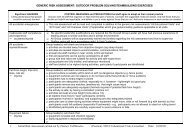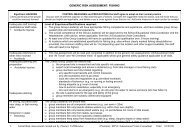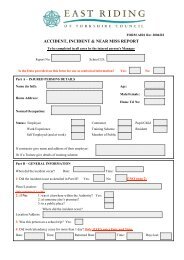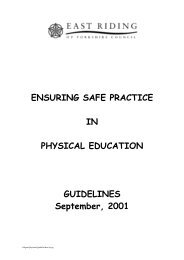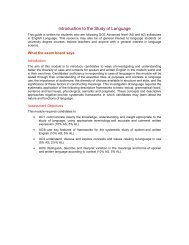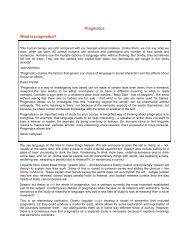Learning, Playing and Interacting - Good practice in the Early Years ...
Learning, Playing and Interacting - Good practice in the Early Years ...
Learning, Playing and Interacting - Good practice in the Early Years ...
You also want an ePaper? Increase the reach of your titles
YUMPU automatically turns print PDFs into web optimized ePapers that Google loves.
18 The National Strategies | <strong>Early</strong> <strong>Years</strong><br />
<strong>Learn<strong>in</strong>g</strong>, <strong>Play<strong>in</strong>g</strong> <strong>and</strong> <strong>Interact<strong>in</strong>g</strong> – <strong>Good</strong> <strong>practice</strong> <strong>in</strong> <strong>the</strong> <strong>Early</strong> <strong>Years</strong> Foundation Stage<br />
In a nursery group, a playful adult-led activity <strong>in</strong>cludes both demonstration by <strong>the</strong> adult <strong>and</strong> children’s<br />
<strong>in</strong>dependent explorations.<br />
The practitioner first demonstrated to a group of ten children how to create static electricity with balloons.<br />
She had set out resources for children to explore <strong>in</strong>dependently, <strong>and</strong> asked <strong>the</strong> children to carry out <strong>the</strong>ir own<br />
experiments to see what <strong>the</strong>y could do.<br />
The practitioner gave runn<strong>in</strong>g commentaries on what different children were do<strong>in</strong>g, encourag<strong>in</strong>g <strong>the</strong> children<br />
to learn from each o<strong>the</strong>r, for example, ‘Harry is rubb<strong>in</strong>g his balloon on his jumper.’<br />
At <strong>the</strong> end of <strong>the</strong> session, <strong>the</strong> practitioner brought <strong>the</strong> children back toge<strong>the</strong>r <strong>and</strong> asked some of <strong>the</strong>m to talk<br />
about what <strong>the</strong>y had done.<br />
Pause for thought<br />
• Can you th<strong>in</strong>k of any o<strong>the</strong>r ways as well as talk<strong>in</strong>g <strong>in</strong> which <strong>the</strong> children could be encouraged to represent<br />
<strong>the</strong>ir experiences of static electricity with balloons<br />
• How could you enable children to cont<strong>in</strong>ue <strong>the</strong>ir explorations if <strong>the</strong>y chose to do so <strong>in</strong> child-<strong>in</strong>itiated play<br />
• Could you identify possible developments across different areas of learn<strong>in</strong>g that children might<br />
demonstrate while <strong>the</strong>y play with balloons: Physical Development; Personal, Social <strong>and</strong> Emotional<br />
Development; Communication, Language <strong>and</strong> Literacy; Problem Solv<strong>in</strong>g, Reason<strong>in</strong>g <strong>and</strong> Numeracy;<br />
Creative Development; Knowledge <strong>and</strong> Underst<strong>and</strong><strong>in</strong>g of <strong>the</strong> World<br />
Adult support for children to resolve a conflict results <strong>in</strong> a creative solution which leaves<br />
children <strong>in</strong> control.<br />
Two four-year-olds <strong>in</strong> a nursery group were argu<strong>in</strong>g over who could wear <strong>the</strong> monster costume. The adult<br />
<strong>in</strong>tervened to stop <strong>the</strong> shout<strong>in</strong>g <strong>and</strong> pull<strong>in</strong>g, <strong>and</strong> held <strong>the</strong> costume while <strong>the</strong>y discussed <strong>the</strong> problem. She<br />
encouraged each child to give <strong>the</strong>ir po<strong>in</strong>t of view <strong>and</strong> say how <strong>the</strong>y felt. She supported one child by say<strong>in</strong>g, ‘It<br />
looks as if you might be feel<strong>in</strong>g angry about that.’<br />
She <strong>the</strong>n posed <strong>the</strong> question, ‘What can we do so that both people will be happy’ ‘Share!’ suggested a<br />
listen<strong>in</strong>g child. ‘How could you share one costume’ asked <strong>the</strong> adult. There was discussion about tak<strong>in</strong>g turns,<br />
but nei<strong>the</strong>r child would agree to wait.<br />
‘I know! We could both have one leg <strong>in</strong>,’ suggested one of <strong>the</strong> two. The adult asked if <strong>the</strong>y would both be<br />
happy with that idea, <strong>and</strong> <strong>the</strong>y agreed that <strong>the</strong>y would. So amid great hilarity <strong>the</strong>y cooperated to put <strong>the</strong><br />
costume on <strong>and</strong> walk away wear<strong>in</strong>g one leg each.<br />
Pause for thought<br />
• How could <strong>the</strong> practitioner build on this experience by help<strong>in</strong>g children to recognise <strong>and</strong> celebrate <strong>the</strong>ir<br />
success <strong>in</strong> solv<strong>in</strong>g <strong>the</strong> problem<br />
• What might be planned for an adult-led opportunity to support children to recognise <strong>the</strong> feel<strong>in</strong>gs <strong>and</strong><br />
po<strong>in</strong>ts of view of o<strong>the</strong>rs<br />
00775-2009BKT-EN © Crown copyright 2009


